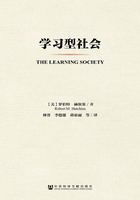
上QQ阅读APP看书,第一时间看更新
第四节 新兴趣产生的后果
在20世纪60年代,前述的局限性大部分都被忽略。相信学生入学能够创造奇迹的新信念,迅速蔓延至世界各地。最引人注目的结果是,男女学生人数在各级学校均出现了惊人的增长,与此相伴随的是各类教育机构在数量上蔚为壮观的增长。尽管还有一些迹象表明,法国的农民和工匠对教育比较冷淡和漠不关心的情况仍然存在,但是,家长们一般都要求他们的孩子接受比他们自己更多的教育 。而且,他们还渴望自己的孩子能够进入那些以前不对他们开放的学校。同时,政府开始用支持的态度看待这些对教育的需求,原因是他们假定,教育和国家繁荣强大之间存在密切的关联。关于这一点,我在前面已经述及。
。而且,他们还渴望自己的孩子能够进入那些以前不对他们开放的学校。同时,政府开始用支持的态度看待这些对教育的需求,原因是他们假定,教育和国家繁荣强大之间存在密切的关联。关于这一点,我在前面已经述及。
20世纪60年代,所有这些现象都是在全球范围内发生的。在西方发达的工业国家,重视发展教育的浪潮似乎很有可能瓦解经历数个世纪才勉强建立起来的现存社会结构。在发展中国家,快速增长的学校教育需求对资源所产生的压力,一方面迫使政府要对重点支持的教育机构的先后顺序做出决策;另一方面也迫使政府慎重权衡是否采纳带有西方国家特色的某些做法,如在不久的将来考虑实施免费中学教育等。然而,即便是在这些国家,人们对教育的热情几乎达到了毋庸置疑的地步,以至于他们宁可选择普遍贫穷落后,但所有人都享有均等机会的学校教育,也不要那种质量虽高但并不是所有人都可以享有的教育 。
。
这种令人惊叹的发展速度对教育提出了第一个主要问题。